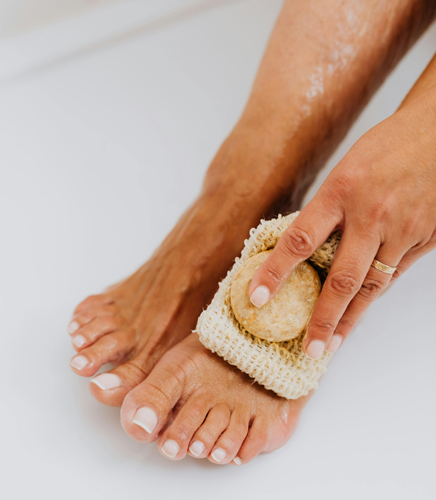Diabetes is a long-term health condition that impacts many individuals. If not managed properly, it can lead to serious complications. One of the most significant risks is the loss of a foot or leg due to amputation. Understanding why this happens and how to prevent it is essential.
Why Can Diabetes Lead to Amputations?
People with diabetes may need amputations because of two main complications: nerve damage and poor blood circulation. These issues impede wound healing and can lead to severe infections.
-
Nerve Damage (Neuropathy) – Prolonged high blood sugar can harm the nerves, especially in the feet and legs. This condition is referred to as diabetic neuropathy. It may cause burning or tingling sensations or impair the ability to feel pain, leading to unnoticed cuts or blisters.
-
Poor Blood Flow (PAD) – Diabetes can cause blood vessels to narrow and harden, reducing blood flow to the feet. Without enough blood, wounds take longer to heal.
-
Infections and Gangrene – A minor cut or sore can become a serious infection if left untreated. In severe cases, gangrene (tissue death) may occur, necessitating the removal of part of the foot or leg to protect the rest of the body.
Common Diabetes Foot Problems and How to Prevent Them
Diabetes can cause foot problems due to damage to both large and small blood vessels. This often leads to nerve damage (neuropathy) and circulation issues, which increase the risk of ulcers and amputations.
Circulation Issues
Foot problems in diabetes often begin with vascular disease. Damage to small blood vessels appears to be a major cause of nerve damage, resulting in pain, burning sensations, or complete loss of feeling. Over time, this can lead to ulcers and abnormal gait, increasing the risk of amputation.
Preventing circulation loss is essential to reducing nerve damage. Keeping blood pressure below 130/80 helps minimize damage to blood vessel walls. Medications that lower triglycerides, raise HDL, and manage LDL, such as statins and gemfibrozil, can help prevent plaque buildup. Certain blood pressure medications called ACE inhibitors and high-dose vitamin E may also improve blood flow.
Signs of Blood Vessel Problems in the Feet
-
Absence of foot pulses
-
Pale color when the foot is raised
-
Feet that feel cold
-
Pain at rest, especially at night
-
Thin, shiny skin and loss of hair on toes and feet
-
Blue or reddish discoloration
-
Ulcers that don’t heal
-
Foot infections that are difficult to treat
Nerve Damage and Its Effects
Approximately 60-70% of people with diabetes experience some form of nerve damage. While poor circulation is the leading cause, high blood sugar can also directly damaged nerves. There are three types of nerve damage in diabetes:
-
Sensory neuropathy – Loss of sensation, tingling, burning, or pain in the feet
-
Motor neuropathy – Muscle weakness, foot deformities, and abnormal gait
-
Autonomic neuropathy – Loss of sweating, leading to dry, cracked skin, which increases infection risk
 How to Care for Feet in Trouble
How to Care for Feet in Trouble
Preventing trauma is the best way to avoid amputation. Properly fitted shoes, preferably tennis shoes, are ideal. If foot deformities are present, orthopedic shoes should be used.
Ways to Reduce Amputation Risk
-
Inspect feet daily using a mirror if needed
-
Keep skin moisturized to prevent cracks, but avoid lotion between toes
-
Never walk barefoot, even indoors
-
Wear thick socks and well-fitted shoes
-
Check inside shoes before wearing them to remove any foreign objects
-
Treat corns and calluses early to prevent ulcers
-
Wash and dry feet daily to reduce bacteria
-
Treat athlete’s foot immediately with antifungal powders and sprays
-
Avoid crossing legs to improve blood flow
-
Trim toenails straight across to prevent ingrown nails
-
See a podiatrist regularly if foot problems exist
When to See a Doctor Right Away
If you observe any of these signs, seek medical help promptly:
-
A wound that refuses to heal
-
Skin discoloration to black or blue
-
Swelling, redness, or foul-smelling pus
-
Pain or numbness that gets worse
Final Thoughts
Amputations due to diabetes can be frightening, but they are often preventable. Caring for your feet, managing your blood sugar, and seeking help early can make a significant difference. Stay proactive about your health to ensure your feet remain safe.
For more information, visit our diabetes resources section or consult a healthcare provider.

 How to Care for Feet in Trouble
How to Care for Feet in Trouble